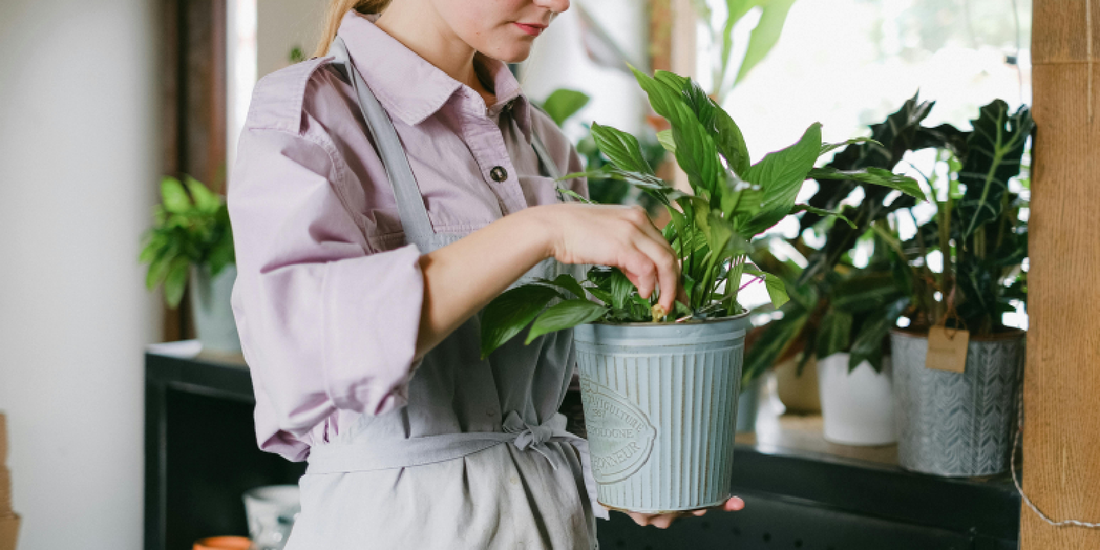
How to Measure Light Intensity for Your Plants
Share
Indoor gardening has transformed the way people experience nature at home. With the rise of stylish multi-tier shelves like the amoyls VerdantGlow S-Shaped 8-Tier Plant Shelf with Grow Lights, plant enthusiasts can grow herbs, flowers, and even compact vegetables in apartments or small spaces. But while soil quality and watering schedules are essential, nothing matters more than light. The type, duration, and intensity of light directly influence how plants photosynthesize, develop leaves, and produce flowers or fruit.
This blog provides a deep dive into how to measure light intensity, why it matters, which tools you can use, and how to apply the results to your home garden. By the end, you will know exactly how to optimize lighting for every level of your VerdantGlow plant shelf, ensuring your collection thrives year-round.
Why Light Intensity Is the Foundation of Plant Growth
Plants are solar-powered organisms. Through photosynthesis, they convert light into chemical energy, fueling every stage of growth. Without sufficient light, even the healthiest soil or fertilizers cannot compensate. Conversely, too much light can harm leaves and stunt development.
- Too little light leads to pale, yellowing leaves, long and weak stems, and minimal new growth.
- Too much light causes scorched or bleached leaves, dehydrated soil, and reduced flowering.
- Balanced light ensures strong stems, deep green foliage, vibrant blooms, and healthy fruiting.
For multi-tier systems like the VerdantGlow Shelf, intensity differences between the top and bottom levels are inevitable. Monitoring intensity allows you to assign plant types to their optimal shelf and prevent growth imbalance.
Light Intensity vs. Light Quality
It’s important to distinguish intensity from spectrum.
- Light intensity: How much light energy reaches the plant surface per unit area.
- Light spectrum (quality): The wavelengths of light provided. For plants, red and blue light are the most critical for photosynthesis.
Grow lights like those integrated into the VerdantGlow Shelf are designed to mimic natural sunlight with a full-spectrum range, combining red, blue, and white light. But even with the correct spectrum, intensity still determines how effectively plants can use it.
Units of Measurement
Several units are used to measure light intensity:
- Lux (lx) – A measure of brightness as perceived by the human eye. Affordable meters and smartphone apps usually provide lux readings.
- Foot-candles (fc) – A traditional horticulture unit, equal to about 10.76 lux. Many plant guides list recommended light in foot-candles.
- PPFD (Photosynthetic Photon Flux Density) – Expressed in micromoles per square meter per second (µmol/m²/s). This measures the exact amount of usable light photons hitting the plant and is the gold standard for growers.
While PPFD meters are the most accurate, even a simple lux meter can help indoor gardeners make useful adjustments.
Recommended Light Levels for Different Plants
Different plants require different light intensities. Here are general guidelines:
- Low-light plants (ferns, snake plants, pothos): 500–2,500 lux or 50–250 µmol/m²/s.
- Medium-light plants (herbs, peace lilies, African violets): 2,500–10,000 lux or 250–500 µmol/m²/s.
- High-light plants (succulents, cacti, fruiting plants): 10,000–20,000+ lux or 500–1,000+ µmol/m²/s.
With the VerdantGlow Shelf, you can assign plants to tiers according to their needs: high-light plants at the top where intensity is strongest, and shade-loving species near the bottom.
Tools for Measuring Light Intensity
- Smartphone Apps – Quick, convenient, and free. Apps like Lux Light Meter or LightMeter can give you a baseline, though accuracy varies.
- Handheld Lux Meters – Reliable, inexpensive, and perfect for hobby growers.
- Quantum PAR Meters – Professional-grade tools measuring PPFD directly. Best for serious indoor growers or edible gardens.
Even budget-friendly tools can guide effective adjustments when paired with consistent measurement routines.
How to Measure Light Intensity Step by Step
- Position your meter: Place it at the height of your plant’s top leaves.
- Test each tier: Measure top, middle, and bottom shelves individually.
- Measure at different times: Light levels shift throughout the day, especially if natural sunlight supplements your grow lights.
- Record readings: Keep a simple journal or spreadsheet. Over time, you’ll notice patterns.
- Adjust accordingly: Move lights closer to plants for higher intensity, or elevate plants on risers to reach stronger zones.
Because the VerdantGlow Shelf has integrated grow lights, these adjustments are simple. Each level can be balanced more precisely once you know the actual numbers.
Balancing Natural Light and Artificial Grow Lights
The shelf’s design makes it suitable for both corner setups and window-side arrangements. If positioned near a bright window, natural sunlight may supplement your grow lights.
- Morning sunlight + grow light cycle: Excellent for leafy greens and herbs.
- Strong afternoon sunlight + grow lights: Perfect for succulents and cacti, but monitor for overheating.
- No natural sunlight: Set timers for 12–16 hours of artificial light, simulating natural cycles.
Using a lux or PPFD meter helps identify whether your plants are receiving sufficient overlap or if you should rely more on artificial lighting.
Common Mistakes When Measuring Light Intensity
- Measuring from the wrong angle: Always take readings at leaf height, not above or below.
- Ignoring shadows: Even within the same tier, shadows from taller plants can reduce light intensity.
- Only checking once: Consistency matters—measure weekly or monthly.
- Not recalibrating after growth: As plants grow taller, their distance from lights changes, reducing intensity.
By avoiding these mistakes, you ensure that your measurements lead to meaningful adjustments.
Case Study: Using the VerdantGlow Shelf
Imagine a three-tier test:
- Top tier: Succulents, reading ~18,000 lux. Perfect for sun-loving species.
- Middle tier: Herbs like basil and mint, reading ~8,000 lux. Well within medium-light range.
- Bottom tier: Ferns and pothos, reading ~3,000 lux. Suitable for shade-tolerant plants.
With measurements guiding placement, every shelf functions optimally.
Signs of Incorrect Light Intensity
- Too little light: Stunted growth, smaller leaves, leggy stems.
- Too much light: Crispy brown edges, bleached patches, slowed development.
- Uneven light: Plants leaning or stretching toward one side, irregular growth between tiers.
Practical Tips for VerdantGlow Users
- Use timers: Automate light cycles for consistency.
- Rotate plants: Weekly rotation ensures all sides receive balanced exposure.
- Clean lights regularly: Dust or residue can reduce intensity.
- Adjust height: Keep lights 6–12 inches above foliage, adjusting as plants grow.
- Group plants by needs: Assign shelves based on whether plants are high, medium, or low light.
Creating a Measurement Routine
- Weekly: Quick lux check using a smartphone app.
- Monthly: Record lux or PPFD levels with a handheld meter.
- Seasonally: Adjust duration in summer or winter depending on natural sunlight levels.
- Annually: Replace grow light bulbs if efficiency decreases.
With this habit, your indoor jungle stays lush and vibrant year-round.
Frequently Asked Questions
Q: Can I rely only on my phone for measurement?
A: Yes, for casual monitoring, but handheld meters are more reliable.
Q: Do I need to measure every plant individually?
A: Measure per shelf. Plants of similar height on the same tier will receive similar intensity.
Q: How many hours of light do plants really need?
A: Most thrive on 12–16 hours of light per day, but rest is also essential.
Q: Do all grow lights lose brightness over time?
A: Yes. Even LEDs degrade slowly, so check annually and replace if necessary.
Conclusion
Measuring light intensity is not just a technical task—it’s about connecting with your plants. When you monitor and adjust lighting, you give your plants the exact environment they need to thrive. The amoyls VerdantGlow S-Shaped 8-Tier Plant Shelf with Grow Lights simplifies this process by combining elegant design with reliable lighting, but success still depends on your attention to detail.
By learning to measure light intensity, adjusting your setup, and developing a measurement routine, you can create a vibrant, flourishing indoor garden that grows with consistency and beauty.
